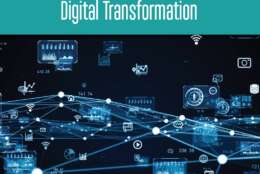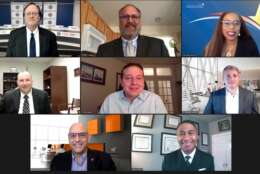SDFM The Business of Defense
-
One week after the Colonial Pipeline was hacked, leading to gas shortages up and down the East Coast, President Joe Biden’s Achieving ‘bold changes’ in authentication from EO on cybersecurity
June 03, 2021 -
During this webinar Kshemendra Paul, the chief data officer for the Department of Veterans Affairs, will address how VA's data strategy starts with consistency and ends with the improved care of veterans. In addition, Richard Breakiron, the senior director of strategic initiatives for federal at Commvault will provide an industry perspective.
June 02, 2021 -
After ten years, the goal around government data centers has shifted from closing them to optimizing them.
June 02, 2021 -
Artificial intelligence is a powerful technology, but it’s not a magic salve you can apply to a process to make it better. If anything, AI – and the related machine learning, robotic process automation and even data analytics technologies – requires more attention than ever to an eternal basic of information technology deployment.
June 02, 2021 -
Experts from the State of New York, IBM, The Commons Project and MITRE will explore the need for a vaccine credential and how this can be accomplished.
June 01, 2021 -
Hosted by Dr. Richard Shurtz and Jim Russ. Sponsored by Stratford University. How you can limit an iPhone to using just one app. And we learn about the Italian engineer and inventor who designed the world’s first personal computer.
June 01, 2021 -
What is Enterprise Risk Management? What are some of the key risks facing government today? How has the managing and responding to risk evolved in U.S. federal agencies? Join host Michael Keegan as he explores these questions and more on a Special Edition of The Business of Government Hour – Leaders Speak on Managing Risk in Government.
June 01, 2021 -
They have been a separate entity around the Pentagon for less than five years, taking on a variety of complex technical issues for different DoD groups. And their organizational structure is a lot like a Silicon Valley start-up.
May 27, 2021 -
Managing artificial and machine learning application projects is in large measure a matter of managing data connected to them. Not only curating data, but also storing it and moving it around consistent with optimal availability cost control. Therefore, it’s important for agencies to spend some effort designing the infrastructures for systems hosting AI development and training data.
May 27, 2021 -
This week, hosts Mark Masselli and Margaret Flinter speak with Dr. Elena Rios, President and CEO of the National Hispanic Medical Association, representing the interests of the nation’s 50,000 Latino Physicians. She discusses the devastating toll the pandemic has taken on the nation’s Hispanic population who have suffered a greater death toll and significant economic as well as mental health burdens. Dr. Rios NHMA’s efforts to improve pipelines for young Latinos to enter the medical field, and for measures to address health inequity impacting communities of color.
May 27, 2021 -
Serverless computing is having a moment. Although it’s been around for several years, recent shifts away from proprietary models toward open source have built momentum. Similarly, the standardization of containers, especially with Kubernetes, has opened up new possibilities and use cases, as well as fueled innovation.
May 26, 2021 -
April 12, 2021 on ForYourBenefit, host Bob Leins, CPA® and co-host Tammy Flanagan, Senior Benefits Director at NITP, Inc., welcome Kim Weaver, Director, External Affairs, and Jim Courtney, Director of the Office of Communications and Education, Federal Retirement Thrift Investment Board.
May 25, 2021 -
In this exclusive executive briefing, IT practitioners describe how agencies are doubling down on digital transformation efforts.
May 24, 2021 -
During this webinar, you will learn how top government cloud executives from the Office of the National Coordinator for Health IT, Defense Health Agency, Department of Defense and the Federal Electronic Health Record Modernization are delivering health IT.
May 24, 2021 -
Hosted by Dr. Richard Shurtz and Jim Russ. Sponsored by Stratford University. Why you probably don’t need a QR Code-reading app. And we learn about the inventor of the cassette tape.
May 24, 2021














